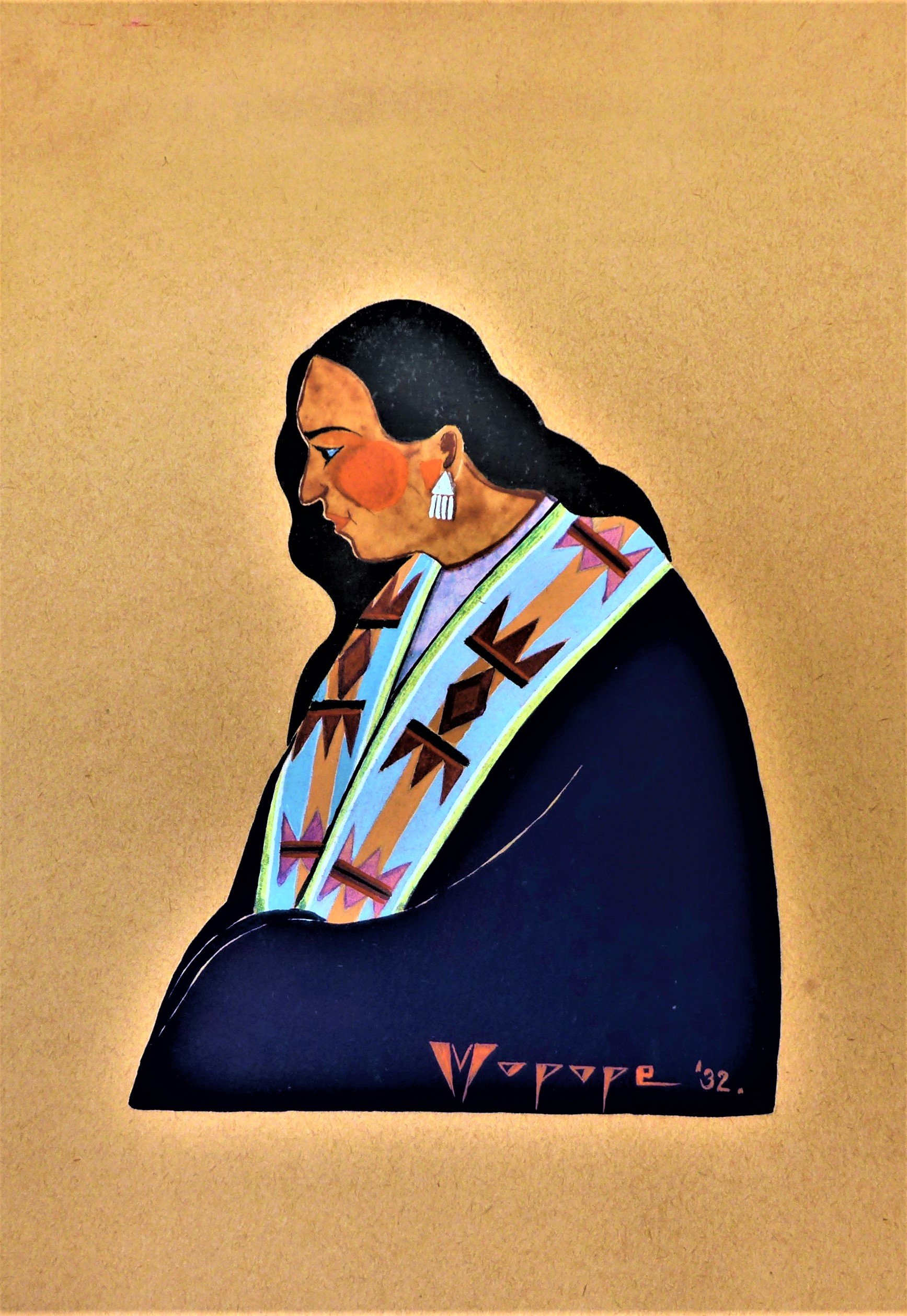

Take a virtual tour.
See it by appointment by contacting Elizabeth Marcha, vice president, business development, at (580) 481-3150 or emarcha@nbcok.com.
Curated by Matthew D. Davids, administrator of art collections
Curators statement
This exhibit is the culmination of an artistic talent that spanned a career several decades long. People noticed Stephen Mopope’s talent from an early age and nurtured it. Mopope’s artwork is important both in the United States and internationally. It doesn’t matter if you see a solo piece of his or his work grouped with other artists, each is unique and stands out.
Mopope painted using the Flatstyle approach, which is a Native American painting style from the 20th century that the Wigwam Gallery explored in a previous exhibit. Much of his work seems to pop with the colors he chooses; it also is intricately detailed, bringing his art to another level. In this exhibit, you’ll see that much of the artwork displays scenes from ceremonies, dancing and daily life.
Many talents, interests
Stephen Mopope was not only an accomplished painter, but also a well-regarded flute player and dancer.
His art depicted everyday life, Kiowa ceremonial dance and, for the Native American Church, religious and ceremonial artwork. People can see the “Ceremonial Dance” mural in Washington, D.C., at the U.S. Department of the Interior.
The exhibit from NBC Oklahoma's collection is composed of 32 of Mopope’s paintings, from between 1929 to 1932. With the medium Casein, or “milk paint.”
Biography
When he was born on the Kiowa Reservation in Oklahoma on Aug. 27, 1898, Stephen Mopope was given a name that meant “Painted Robe” — Qued Koi.
Mopope’s art education started early. As a child he would draw in the sand, and his family took notice, teaching him the traditional way of painting hides. Later, he received art training under Sister Olivia Taylor, a Choctaw nun at St. Patrick’s Indian Mission School in Anadarko. After high school, he attended the University of Oklahoma and learned under notable curator and artist Oscar Jacobson.
While at OU during the late 1920s, Mopope joined a group of students promoted by Jacobson that eventually became known as the Kiowa 6, of which he is the most prolific artist. Other members were Jack Hokeah, Spencer Asah, Lois Smokey, Monroe Tsatoke and James Auchiah. All but one attended St. Patrick’s School together.
The Kiowa Six were immensely successful both nationally and internationally, with art shows starting in Prague, Czechoslovakia , and an art portfolio printed for France. Mopope and five more Native American artists were commissioned to paint murals in Washington D.C., for the U.S. Department of the Interior.
Mopope died at Fort Cobb, Oklahoma, on Feb. 2, 1974.
Works
In Oklahoma, Mopope’s work is in these other collection:
Anadarko Community Library
Fred Jones Jr. Museum of Art
Gilcrease Museum
Mabee-Gerrer Museum of Art
Oklahoma Art Center
Oklahoma Museum of Natural History
Philbrook Museum of Art
Seminole Public Library
Southern Plains Indian Museum.
Outside of Oklahoma, see his work here:
Museum of Northern Arizona
Museum of New Mexico
Smithsonian American Art Museum